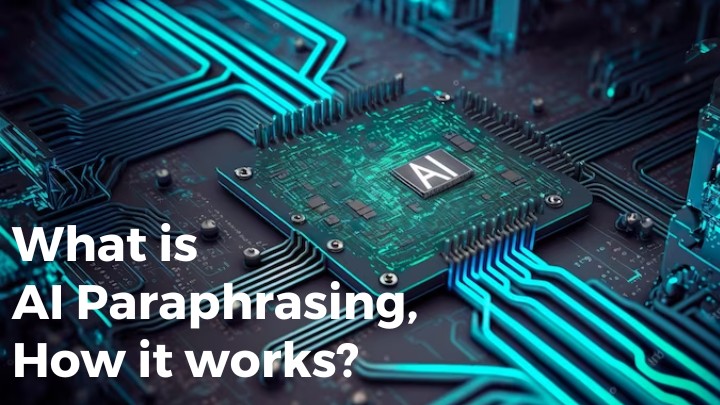
AI Paraphrasing has become increasingly popular in recent years due to its ability to quickly and accurately rephrase large amounts of text. It has made life simple for many users who are not academically smart. Well, it also has a dark side that it encourage ghost writing on a gigantic scale. With the continuous evolution, it will become impossible in upcoming time to bifurcate the original and copied content.
In this blog article, we are going to discuss all about it.
What is AI Paraphrasing?
AI paraphrasing is a process of rewriting text using Artificial Intelligence technology that ensures the original meaning is retained, but different words and sentence structures are used. It has become an increasingly popular tool for content creators, students, and academics who need to produce high-quality and original content based on an existing source text.
This process is simple and involves the use of advanced algorithms that analyze the source text and generate a new version of it using different words and sentence structures. The algorithms used in such tools are designed to understand the context of the source text and the intended meaning, ensuring that the new version is accurate and coherent.
Benefits of AI paraphrasing
One of the main benefits of AI paraphrasing is that it saves time and effort. Instead of manually rewriting text, which can be time-consuming and may not produce the desired results, these tools can generate a new version of the text quickly and accurately. This allows users to focus on other aspects of their work while still producing high-quality content.
Another advantage is that it can help to avoid plagiarism, if not stop completely. Plagiarism is a serious issue for students and academics, and using such tool can help to ensure that the new text is original and not a direct copy of the source text. By using different words and sentence structures, the new version of the text can be considered original and not plagiarized.
AI paraphrasing is also useful for content creators who need to produce a large amount of content in a short amount of time. With the help of it, they can quickly generate multiple versions of the same content, making it easier to produce a high volume of content in a short period of time. This is especially useful for businesses and marketing agencies that need to produce content on a regular basis to attract and retain customers.
Limitations of AI paraphrasing
However, it is important to note that it is not perfect and has its limitations. While it can generate new versions of text quickly and accurately, it may not always capture the nuances of the source text, and the new version may not always be to the point or grammatically correct. Therefore, it is important to review the new version of the text and make any necessary edits to ensure that it is accurate. You must put your own touch of writing to it.
Secondly, it may not always be able to produce accurate and grammatically correct sentences. It might produce sentences that flow well but don’t make sense as per the subject. This can make the new version of the text difficult to read and may even lead to misunderstandings or confusion. You must learn how to check if an article is written via an AI tool or not to get better overview.
It can also be misleading if the content is very much niche or of high level of technical details. If the enough subject matter is not available on general domains or web portals, it cannot give desired output.
In a nutshell, manual editing and proofreading is always recommended.
Technologies involved in AI Paraphrasing
You have understood so far that what is AI Paraphrasing and how it works. Now lets’s understand what technologies are involved in such complex process. There are multiple technologies used; Natural Processing Language (NLP) and Machine Learning (ML).
What is NLP?
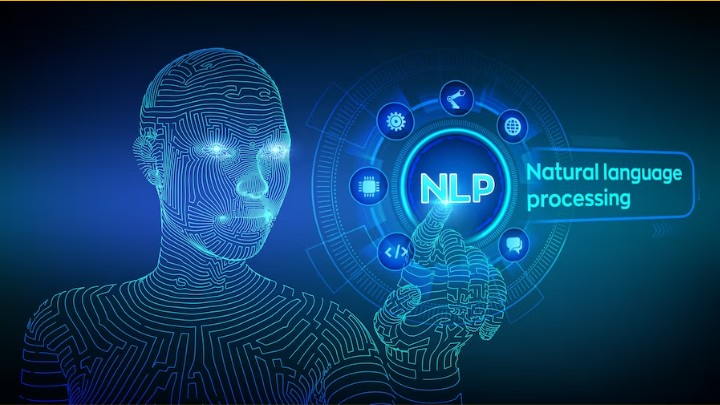
NLP, or Natural Language Processing, is a field of artificial intelligence that focuses on the interaction between computers and human language. It is a technology that enables machines to understand, interpret, and generate human language, which is a very complex work.
NLP has become an increasingly important technology in recent years, as the amount of digital content is growing a lot. From social media posts to news articles to emails and chat messages, there is a huge amount of text data that needs to be analyzed, understood, and processed. It works by breaking down human language into its various parts, such as words, phrases, and sentences, and then applying mathematical and statistical techniques to understand and interpret the meaning of the text. This involves a range of different techniques, including sentiment analysis, text classification, named entity recognition, and machine translation.
One of the main applications of NLP is in the development of chatbots and virtual assistants, which use natural language processing to interact with users and provide information and assistance. For example, a chatbot may be programmed to answer customer service queries, while a virtual assistant may be used to control smart home devices or provide scheduling assistance. Other benefits includes information retrieval, text mining, and sentiment analysis. It can be used to analyze social media posts to gain insights into consumer sentiment, or to analyze news articles to identify emerging trends or topics.
What is Machine Learning?
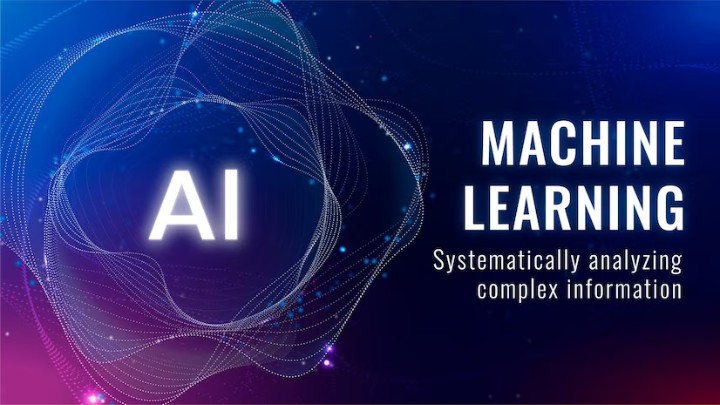
Machine learning is a subset of artificial intelligence that enables machines to learn from data and make predictions or decisions based on that data. It involves the use of sophisticated algorithms and statistical models to analyze data, identify patterns, and make predictions or decisions without being explicitly programmed to do so.
The basic idea behind machine learning is to give machines the ability to learn and improve over time, without the need for human intervention. This is achieved by providing the machine with a large amount of data, which is then used to train a model that can make predictions or decisions based on new data.
There are many different types of machine learning, including supervised learning, unsupervised learning, and reinforcement learning. Supervised learning involves providing the machine with labeled data, which is used to train the model to make predictions or decisions based on new, unlabeled data. Unsupervised learning involves providing the machine with unlabeled data, which is used to identify patterns and structure within the data. Reinforcement learning involves training the machine to make decisions based on feedback and rewards.
Machine learning has many applications across a wide range of industries, from healthcare to finance to transportation. It is used to make predictions and decisions in areas such as disease diagnosis, fraud detection, and self-driving cars.
While machine learning has many benefits, it also has its limitations and challenges. One of the main challenges is the need for high-quality data, as the accuracy of the machine learning model depends heavily on the quality and quantity of the data used to train it. In addition, there are also ethical concerns around the use of machine learning, particularly in the areas of bias and fairness.
How AI Paraphrasing works?
This process involves a number of steps. Let’s take a look at them.
1. Language and context identification
This is the first step in the AI paraphrasing process. The AI system understands the language and context of the given material before paraphrasing it.
Language identification is the process of understanding the language of the source material. This is done by analyzing the structure of the text and understanding the grammar and syntax of the language. This allows the AI system to determine the most appropriate words and phrases for the context.
Context identification is the process of understanding the meaning of the source material. This is done by analyzing each sentence individually and understanding the relationships between words and phrases. This allows the AI system to make changes that don’t disturb the context of the input.
2. Paraphrasing by changing synonyms
Once the AI system has identified the language and context of the source material, it can then begin the process of paraphrasing by replacing words and phrases with synonyms. Depending on the type of A tool you’re using, there can be definite other changes as well such as changing sentence structure, and changing sentence length also. This will give the source material a completely new form.
To give you a better idea of this, we are going to show you an example. We will be using an online AI-based paraphrasing tool. We have taken a piece of text from one of our own published articles, to make sure how the paraphraser rephrases it using advanced technologies. The result we got from the tool can be seen in the attached image below:
As you can see, the tool has rephrased content by replacing complex words with synonyms and also eliminating extra words.
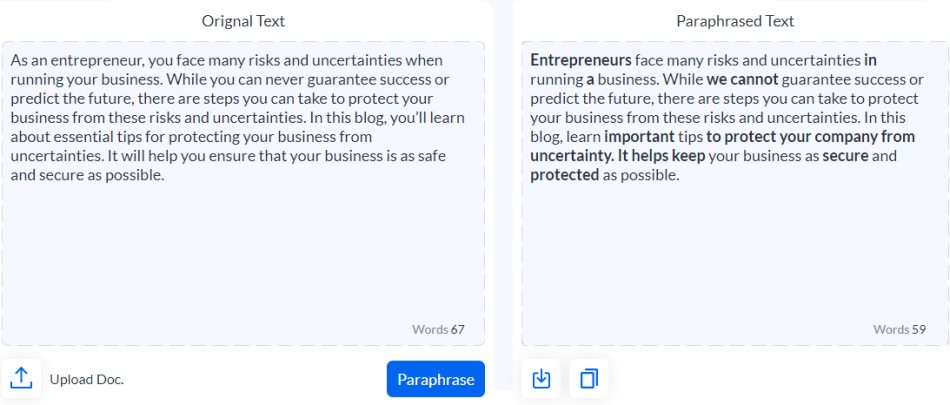
3. Removal of imperfections
AI paraphrasing is not all about removing extra words and replacing complex words with simple synonyms. But it also takes off the imperfections found in your content.
Imperfections include grammar and spelling errors that can damage the credibility of your content. AI paraphrasing intelligently detects even the smallest traces of grammar and spelling errors in the content, it corrects them automatically.
To help you understand better, we have given the tool an inaccurate piece of content to see how it corrects it.
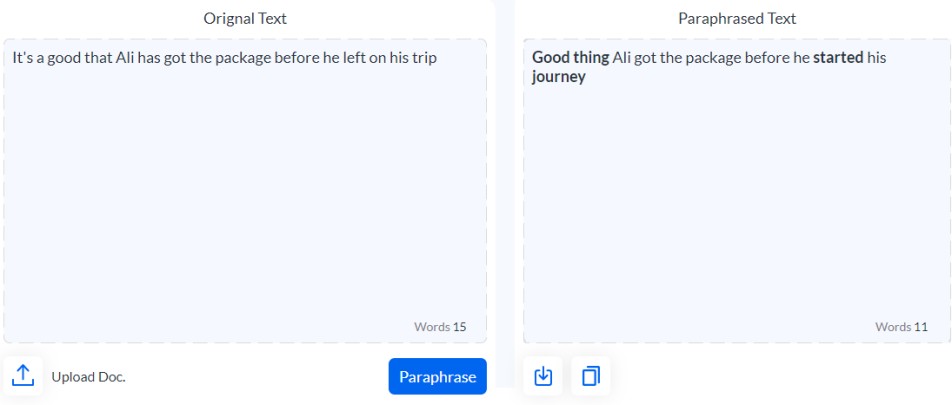
As can be seen in the image above, the tool has intelligently corrected the grammar mistakes without changing its original tone and meaning.
Final words:
In conclusion, AI paraphrasing is a useful technique that can be used to rephrase the content efficiently without altering its original meaning. It is an increasingly popular technique and one that is becoming more sophisticated as artificial intelligence technology advances.
